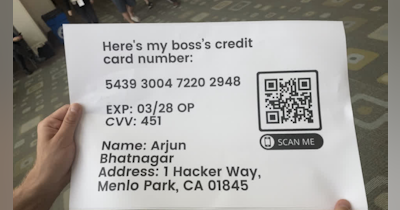An exchange rate is the value of one currency compared to another and is used to determine how much of one currency you'll need to exchange for another. Based on economic and political factors, exchange rates can fluctuate up and down but it's usually expressed as how many units of one currency you can get for one unit of another currency.
For the sake of our conversation though, I'd like you to consider this:
What if OOH exchange rates were a way to integrate pre-campaign impression counting used for planning and post-campaign attribution reporting used for creating a feedback loop?
Please allow me to indulge you...
Planning currencies are used by media buyers and sellers to agree on a price most commonly measured in Cost Per Mille (CPM, or the cost to deliver 1,000 impressions). Attribution currencies, on the other hand, are used to measure the impact of an ad campaign by analyzing data such as website visitation and conversion, app engagement, or foot traffic to specific points of interest. Ultimately with the intention of answering the question - did this (specific placement, format, market) generate a return above and beyond my investment?
So what if you can have your cake and eat it too?
What if you can continue planning based on an established and accepted currency and can translate that into an attribution story that is transparent, credible, and most importantly - useful?
Attribution Starts During Planning
Let's say you're a Quick Service Restaurant (QSR) chain using Geopath (currency) ratings to plan your OOH campaign across multiple markets. Put simply, Geopath ratings are an industry currency used to determine the cost to deliver 1,000 impressions here in the States.
You're going to do everything the same as your doing it today, with one key difference.
When the campaign goes to contract, you send a copy to your attribution reporting partner at the same time, and here's why:
By running your OOH plan through your attribution reporting platform before the campaign goes live, you can establish your 'OOH Exchange Rates'.
What are 'OOH Exchange Rates'? It's the difference between your estimated planning impressions and what the attribution reporting is estimating to reflect when you get to the end of the campaign.
Let me pause there because there are a few reasons why.
1. There's nothing worse than being all excited to present some great post-campaign reporting and have it come as a surprise to the brand when they don't agree with your methodology. Best case? They tell you. Worst case? They don't.
2. If you're going to lean all the way in on helping brands optimize to a feedback loop it has to be one that they find valuable. Reporting on things that matter to you doesn't matter. Reporting on things that matter to the people giving you money is the only thing that matters.
3. It may expose a potential pitfall or opportunity if you discover some radical delta between the two.
It's important to keep in mind that you can't be the currency. That's grading your own homework and unless you are Carfax, you don't get to do that. Though I do believe there is an opportunity for someone to be the Carfax of OOH, win demand-side adoption (brand direct), and scale like crazy. I came from the automotive industry, I watched Carfax create demand-side adoption firsthand to the point where customers would not buy a used car without seeing a Carfax (service paid for by dealers). That'll be a different story for a different day.
Four Pillars
The use of OOH Exchange Rates allows brands to measure the impact of their OOH campaigns in a more deterministic way, leading to better-informed decisions and more effective strategies that consistently yield a return that can be distilled into these four core pillars:
- Maximize ROI: By using OOH Exchange Rates, brands gain a more accurate picture of their campaign's impact, allowing them to optimize their spend and predictably scale across new markets.
- Quantify Campaign Impact: OOH Exchange Rates allow brands to quantify the impact of their OOH campaign in a more deterministic way, providing a clearer picture of how each part of the campaign works together to produce the intended outcome.
- Better Decision Making: With more accurate data and insights, brands can make better-informed decisions about future OOH campaigns, and specific media placements, informing their overall advertising strategy (not just OOH).
- Improved Accountability: OOH Exchange Rates provide a more transparent and accountable system for measuring media value, ensuring that brands are getting what they pay for and that publishers are valuing their inventory appropriately.
By embracing these pillars, brands can unlock the full potential of their OOH campaigns and drive sustainable growth for their businesses. With OOH Exchange Rates, everyone wins.
-Tim Rowe











